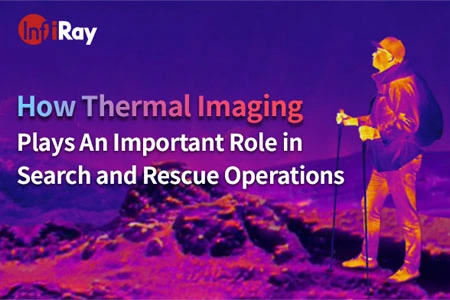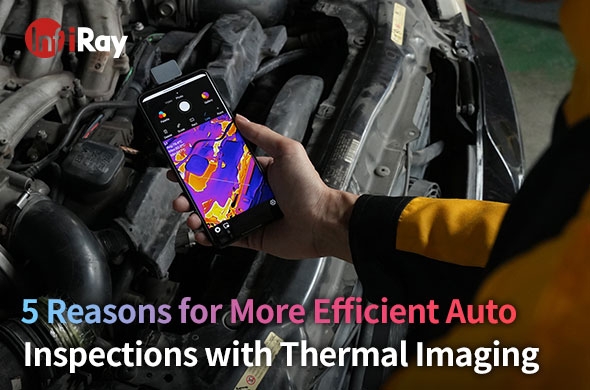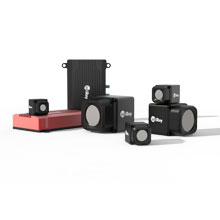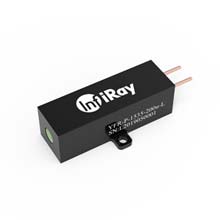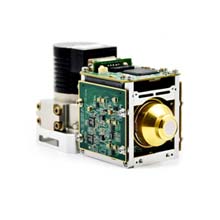What are the advantages of thermal imaging compared to other imaging techniques?
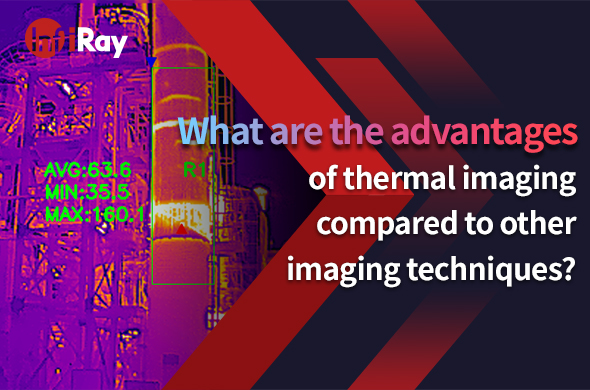
Thermal imaging has emerged as a remarkable imaging technique that has revolutionized numerous industries across the globe. By capturing the infrared radiation emitted by objects, thermal imaging allows us to visualize and analyze temperature variations. This technology has a plethora of advantages over other imaging techniques, making it an invaluable tool in various fields.
Advantages of Thermal Imaging Technology
1. Non-Contact Nature: A Safe and Efficient Approach
Thermal imaging technology stands out for its non-contact nature. Unlike other imaging techniques, it does not require physical contact with the subject being examined. This characteristic not only ensures the safety of the object or individual under scrutiny but also facilitates efficient inspections in sensitive areas. Whether it's electrical systems, medical diagnoses, or fragile materials, the non-contact nature of thermal imaging minimizes the risk of damage or contamination, providing accurate results without compromising safety.
2. Precise Temperature Measurement and Analysis
The thermal camera excels in detecting temperature variations, even the subtlest ones. By capturing thermal signatures, this technology allows for precise temperature measurement, enabling the identification of anomalies that are often invisible to the naked eye. Whether it's detecting energy loss in buildings, diagnosing medical conditions, or identifying mechanical issues in industrial equipment, the thermal imaging camera provides unparalleled precision, helping professionals make informed decisions based on accurate temperature data.

3. Heat Visualization for Enhanced Analysis
One of the key advantages of thermal imaging is its ability to visualize heat patterns. By representing temperature distribution in a clear and intuitive visual format, thermal imaging simplifies the interpretation and analysis of data. This feature proves invaluable in various applications, such as identifying heat loss in buildings, monitoring industrial processes, or assessing the thermal behavior of electronic components. The ability to visualize heat patterns empowers professionals to identify trends, anomalies, and areas of concern, facilitating efficient decision-making and targeted interventions.

4. Application Flexibility: A Solution for Diverse Industries
Thermal imaging camera demonstrates remarkable versatility and flexibility, catering to a wide range of industries and applications. From security and surveillance operations to firefighting, wildlife monitoring, and electrical inspections, thermal imaging finds extensive use in diverse environments. Unlike other imaging techniques, thermal imaging performs exceptionally well in challenging scenarios such as low-light conditions or smoke-filled areas. Its adaptability across industries and environments makes it an indispensable tool for professionals seeking accurate and reliable temperature analysis.
Comparison with Other Imaging Technologies
1. X-ray Imaging: Limited Scope and Health Concerns
X-ray imaging is limited to specific materials and applications, making it less versatile than thermal imaging. Additionally, X-ray imaging raises concerns about radiation exposure, posing potential health risks to both subjects and operators. Thermal imaging, on the other hand, overcomes these limitations, providing non-destructive and non-invasive inspections.

Utilizes InfiRay Thermal Imaging Technology for Capturing Images During Brain Surgeries.
2. Ultrasonic Imaging: Limited Resolution and Application Scope
Ultrasonic imaging, while useful in certain scenarios, has inherent limitations. It offers reduced resolution and accuracy compared to thermal imaging, limiting its effectiveness in detailed temperature analysis. Furthermore, ultrasonic imaging is limited to specific materials and applications, whereas thermal imaging can be employed across a wide range of industries and environments.
3. Visible Light Imaging: Reliance on Ambient Light and Limited Detection
Visible light imaging heavily relies on ambient light conditions for capturing images. This dependency restricts its performance in situations with inadequate lighting. Moreover, visible light imaging has limited capabilities when it comes to detecting hidden or internal defects, whereas thermal imaging excels in identifying temperature anomalies, making it an ideal choice for comprehensive inspections.
Promising Future of Thermal Imaging
As technology continues to advance, the future of thermal imaging appears exceptionally bright. Several developments are poised to enhance its capabilities and expand its applications even further.
1. Higher Resolution and Enhanced Accuracy: Ongoing advancements in sensor technology are expected to deliver thermal imaging devices with higher resolution and improved accuracy. This will enable professionals to capture more detailed and precise temperature data, enhancing their ability to detect subtle variations and make more informed decisions.
2. Integration with AI: The integration of thermal imaging with AI algorithms holds tremendous potential. By leveraging AI, thermal imaging can automate temperature analysis, identify patterns, and detect anomalies more efficiently. This integration will not only save time but also improve the accuracy and reliability of thermal imaging inspections.
3. Miniaturization and Portability: The shrinking size of thermal imaging devices and the development of portable solutions make thermal imaging more accessible and convenient. This portability opens up new possibilities for on-the-go inspections in various industries, including construction, energy auditing, and research. Click to see the world's smallest thermal imaging camera.
4. Multispectral Thermal Imaging: Multispectral thermal imaging combines thermal data with other imaging modalities, such as visible light or hyperspectral imaging. This integration provides a more comprehensive understanding of the subject under examination, allowing for advanced analysis and interpretation of complex scenarios.
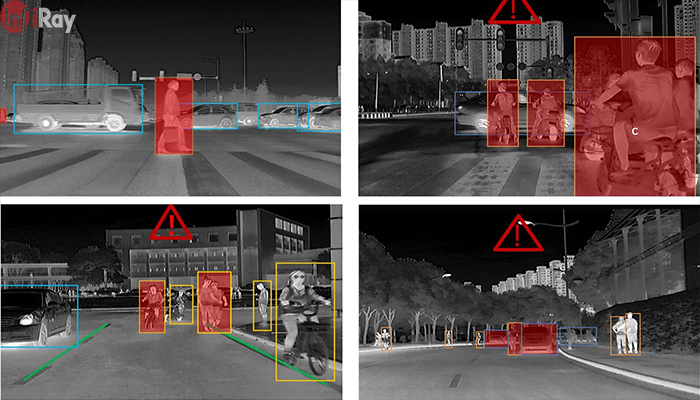
5. Integration with the IoT: The integration of thermal imaging with IoT infrastructure offers exciting opportunities for real-time monitoring and predictive maintenance. By connecting thermal imaging devices to IoT networks, anomalies and deviations in temperature can be detected instantly, enabling proactive measures to prevent equipment failure and optimize operational efficiency.
As professionals across industries continue to recognize the value of thermal imaging, it is expected to play an increasingly significant role in inspections, diagnostics, security, and research. By harnessing the power of thermal imaging, businesses can make informed decisions, enhance safety measures, and optimize their operations.
Incorporating thermal imaging into your industry-specific applications can bring tremendous benefits, providing a comprehensive understanding of temperature patterns, identifying anomalies, and enabling proactive interventions. Embrace the advantages of thermal imaging and unlock new possibilities for precision and efficiency in your field.








